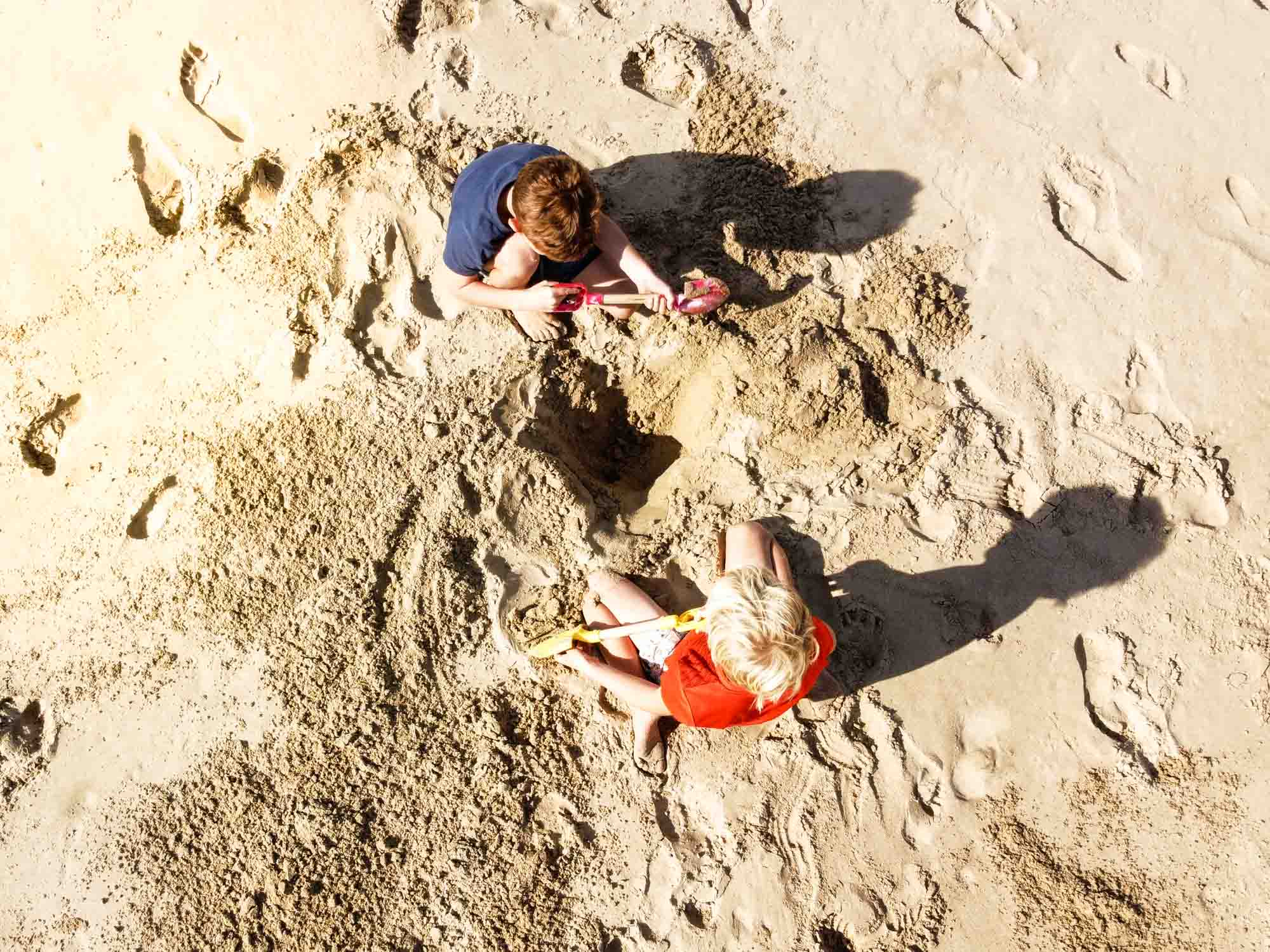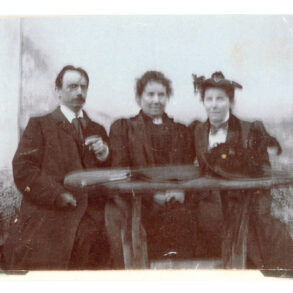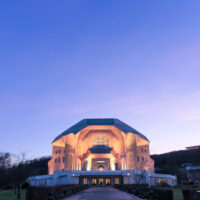Dan McKanan is a professor at Harvard Divinity School and the author of two books on anthroposophy: Eco-Alchemy: Anthroposophy and the History and Future of Environmentalism and Camphill and the Future. In this interview, he talks with Charles Cross about studying anthroposophy academically and in America, the changes that anthroposophical institutions are going through, and his current research, which is inspired by Goethean Science.
Charles: Your title at Harvard is “Ralph Waldo Emerson Unitarian Universalist Association Senior Lecturer in Divinity,” but you’ve spent much of your career studying anthroposophy. Could you speak a bit about your experience studying anthroposophy within the intellectual, political, and spiritual streams of America?
Dan: One of the quick things that I often say in explaining the connections between the different parts of my intellectual agenda is that Unitarian Universalists and American Anthroposophists both have enormous respect for Ralph Waldo Emerson, but mostly for different reasons. Unitarian Universalists remember Emerson as a rebel against revelation-based religion. In his Divinity School address, most famously, Emerson said that you shouldn’t get your connection to God second-hand through authoritative scriptures but strive to have the same direct relationship to the divine as the prophets who created those scriptures themselves. For Unitarian Universalists, that often means shaking off what might be perceived as the shackles of historic Christianity in favor of forms of spirituality that might not involve the concept of the divine at all but perhaps just a direct connection to the creativity found throughout humanity or nature. On the other hand, anthroposophists typically esteem Emerson as a champion of the primacy of spirit in an increasingly materialistic age. They see him as a source for the idea that the spiritual world has its own laws, which one has to attend to as fully as the laws found by scientists who practice mainstream methods.
I am also very intrigued by social threefolding, even though I haven’t written about it extensively, and I’m not sure I’ll be able to in my lifetime. I have broadly socialist economic values myself, values of cooperation and striving towards economic equality, but I’m not especially confident about the state’s or government’s capacity to be the institutional carrier for that. I think that my skepticism about government is quintessentially American. Compared to Western Europe, the United States has a stronger libertarian streak. Anthroposophy offers one model of how to work towards economic cooperation without relying on centralized political power. Intentional communities of all kinds offer experiments in economic cooperation without centralized political power. The Camphill Movement, for example, brings together the anthroposophical stream and the intentional community stream in a way that’s quite interesting but also quite challenging because often, the extent to which one tries to work outside the powers of the state means relying heavily on private donations, which can create its own sorts of imbalances. [Ed note: Camphill is a worldwide social initiative that creates communities designed to support people with learning disabilities and other care needs.]
It occurs to me that in the United States, there’s a strong sense that different cultures are encountering or overlapping each other. I appreciate how your books traced the different ways that anthroposophical organizations have been both deeply involved in their surrounding communities and at the same time somewhat withdrawn, and how other spiritual traditions also experience this tension.
In Eco-Alchemy, I drew a distinction between self-reinforcing and self-dispersing spiritualities. I was trying to use neutral language to describe these two ways that a spiritual movement can organize itself. A self-reinforcing spirituality encourages people to make a deep commitment and to apply ideals from their spiritual path to all aspects of their lives. When Rudolf Steiner gave lectures on nutrition, agriculture, education, medicine, economics, and sort of laid out ideas about how anthroposophists could allow all of those different aspects of their lives to be suffused with spirit, he was laying out a model of anthroposophy as a self-reinforcing spiritual path. The people who relocated to be close to the Goetheanum embraced that and in a different sort of way the founders of Camphill did that by creating self-enclosed villages where people could live anthroposophy 24 hours a day, seven days a week.
Sometime in the 1970s, it was almost like a switch was flipped, and the anthroposophical movement suddenly became what I would call a self-dispersing spirituality, a spirituality that offers many ideas to the world but doesn’t seek to exert any control over how individuals might work with those ideas. Now, Rudolf Steiner, from the very beginning, did include some aspects of this sort of self-dispersing approach in his presentation of anthroposophy, particularly in his insistence that people should embrace those portions of the anthroposophical message that they understood to be true through their own experience. He insisted that there was not one correct anthroposophical way to eat but that it was important for each individual to make free choices guided by insights from the spirit world. So, there was an element of self-dispersion from the beginning, but in the 1970s, the people leading anthroposophical initiatives began making a different set of choices that tilted towards a much more self-dispersing way. This included—and I’m not sure exactly the year this happened—making the instructions for biodynamic preparations publicly available to people who weren’t part of the research group. It also included creating Camphill communities that were not in isolated rural areas but in the center of town, or a little bit later, making Camphill-sponsored cafes in various towns or grocery stores so that people with no other connection to Camphill would come and shop. In the United States, public charter schools were created using a Waldorf curriculum. We see families that enroll their kids in a Waldorf school or the owners of a vineyard who begin using biodynamic methods come to anthroposophical initiatives with interest centered on just one dimension.
The tension between these two approaches to anthroposophy is a big theme in the movement right now. On the one hand, there are initiatives focused on the practical applications of anthroposophy without being involved with the deeper spiritual aspects of it, which many people see as diluting anthroposophy. On the other is a more conservative approach, which can sometimes feel like being in an anthroposophical bubble and which some people find rigid.
In a sense, it’s very fruitful that Anthroposophy works with these two poles because working with polarities is a central spiritual practice of anthroposophy at its best. At least one individual said to me that it’s very important to hold both Lucifer and Ahriman close at hand. Any set of poles is, at one level, a pair of demons, either of whom could destroy you, but at another level, they can be a pair of friends who will enrich your life if you relate to them in a balanced way. I would say the demonic face of self-reinforcing spirituality is cultism or authoritarianism, people being so caught up in their spiritual movement that they lose themselves and they lose a vital connection to their neighbors. The demonic face of self-dispersing spirituality is commercialism. Since people are not going to make a real spiritual commitment to anything, everything is valued simply by what people will pay for. If biodynamic wine is the biodynamic product that people are most willing to pay for, that’s where the energy flows.
Dialogue with other spiritual movements is one really important tool for reducing the demonic potential of self-reinforcing and self-dispersing spiritualities because these dynamics are not utterly unique to Anthroposophy. There are others on this path, and if anthroposophists make friends with those others, it will become easier to hold the reinforcing and dispersing elements in truly creative tension.
A great example of this would be some things that have happened in Camphill over the past generation. As Camphill has tilted toward the self-dispersing kind of emphasis, Camphills have reached out to lots of people who don’t share the spiritual worldview of anthroposophy. Many of those people, especially those who wound up on Camphill boards of directors in England and Ireland, had a worldview deeply shaped by mainstream social care bureaucracies. It didn’t take long for the long-term Camphill coworkers with an anthroposophical spiritual worldview to come to loggerheads with the seemingly bureaucratic, Ahrimanic worldview of board members who rightly recognized that the Camphillers were too self-enclosed in some ways. They were not looking outside themselves for the best insights, say, from the disability rights movement. This had tragic consequences for Camphill in England and Ireland—certainly from the perspective of traditional Camphillers who saw communities shorn of the values they held as most essential, but also tragic from everyone’s perspective, because people who had once worked together harmoniously came to regard one another as enemies.
I wonder what would have happened if Camphill’s outreach to outsiders had drawn more heavily on the L’Arche movement, the other big international network of intentional communities supporting people with intellectual disabilities rooted in Roman Catholicism. It also holds itself to spiritual ideals and has been struggling with what to make of the fact that many people are drawn to L’Arche without a personal connection with Catholicism. You know, if Camphills had brought L’Arche folks onto their boards and if L’Arche had brought Camphill folks onto their boards, those people might have shaken up the sort of sleepy habits of Camphill without pushing the movement in a purely bureaucratic direction that would provoke this very negative reaction. This has happened in the Camphill Association of North America to some extent. The current director of that association, Karen Murphy, is somebody who comes out of a Roman Catholic social justice background, is very aware of various intentional community impulses in Catholicism, and has thus been able to recognize the intentional community element of Camphill as not incidental but essential to it, while also facilitating interaction with people from beyond the movement. You certainly see similar dynamics in all spiritual communities, whether they be Roman Catholic sister communities, Buddhist monastic communities, or Hare Krishna communities in India that have embraced biodynamics as a form of agriculture compatible with their spiritual ideals.
Would you like to tell us about your work with Anthroposophy right now?
The research project that I’ve tried to put at the center of my attention over the past couple of years is not directly related to anthroposophy but is deeply shaped by anthroposophical approaches to research, particularly by the ideals of Goethean Science. I’m looking at wild space conservation in metropolitan Boston. During the pandemic, my long-standing hiking habits in the wilderness parks close to my home intensified, and I began seeing them in new ways. I became increasingly curious about the process by which wild spaces so close to the city had been preserved because they had all been preserved at the same time in the 1880s and 1890s by a group of activists troubled by deforestation. New England had hit its peak deforestation in the middle of the 19th century, and these activists were keenly aware that if New England remained bare of trees, it would likely become progressively drier because trees hold water. They began asking other questions about how human activity might change the climate. So, already in the 1880s, some of these activists were warning that cutting down trees and burning fossil fuels would change the composition of oxygen and carbon dioxide in the atmosphere, which could be harmful to human health. They didn’t quite pick up on the greenhouse effect. They actually had other contemporaries who were beginning to understand the greenhouse effect, but they didn’t quite put all the pieces together. But these activists did get the more important ecological insight that if you change one part of a complex system, you will change the whole system.
I got curious about this story and decided to investigate it in what I understand to be a fairly classically Goethean way. Instead of coming up with a bunch of hypotheses and testing them, I decided to observe the phenomenon I was curious about and see what I noticed. So, I spent a sabbatical year trying to walk through all of the spaces that had been preserved by legislation in Massachusetts in the 1890s. I just walked through the parks on the ridge, and then I walked alongside the three rivers and noticed what was there to be noticed.
I discovered a few things that were not part of my thinking when I began the work. One was that these spaces are full of memorials to the people who preserved them 140 years ago, to people who renewed habits of care for them in the 1970s or the 1990s, and some just to people who loved them. It became clear that even in the West, where we don’t think of ancestral devotion as part of our spirituality, caring for wild nature is inseparable from caring for the spirits of our ancestors.
I also learned that the people creating these parks in the 1890s also made hospitals and schools for people with intellectual disabilities in the same spaces. For many of the same reasons, they believed that time in nature was healing for people. They thought they could help people with disabilities re-enter mainstream society by placing them in environments where they could walk regularly amid the trees and encounter a variety of organisms. But that is not what happened in these spaces—these spaces that were designed to be places of empowerment became places of segregation for people who came to be seen as a threat to their neighbors. The first state park in the United States, which is nearby, was founded with legislation that included establishing three facilities for people with disabilities. Still, within 50 years, they were conducting experiments there on children with intellectual disabilities and how they were impacted by doses of radiation that might be unsafe.
This story feeds back into my research into Camphill. What does it mean to create community for people of diverse abilities that’s genuinely empowering and doesn’t devolve into institutional oppression? Connection to nature is a big part of that story, initially and for Camphill, but even with that lively connection to nature, you have to be constantly vigilant. The logic of the institution can even seep into a community striving to be the opposite of an institution.
Wow, what a beautiful project. Those are the same areas that Emerson and your intellectual ancestors at Harvard would have walked.
Absolutely! I also turned to this project because I felt like I’ve spent enough time on anthroposophy and needed to shift to the actual intention of my chair at Harvard, but there’s a lot of intersection even here. Some of the people involved in this project were Unitarians. Certainly, some of them were deeply influenced by Emerson and Thoreau, but some were Theosophists, and thus, in the same spiritual stream that culminates in Anthroposophy.
More Camphill
Image Joshua Gaunt










I recently read your book Eco Alchemy, Dan. I found it really inspiring and I learned lots of things about Anthroposophy that I didn’t know. I think you have a very balanced view of how things have developed over the years. Thanks so much for your work!
Thank you for this interview, it was very enlightning.